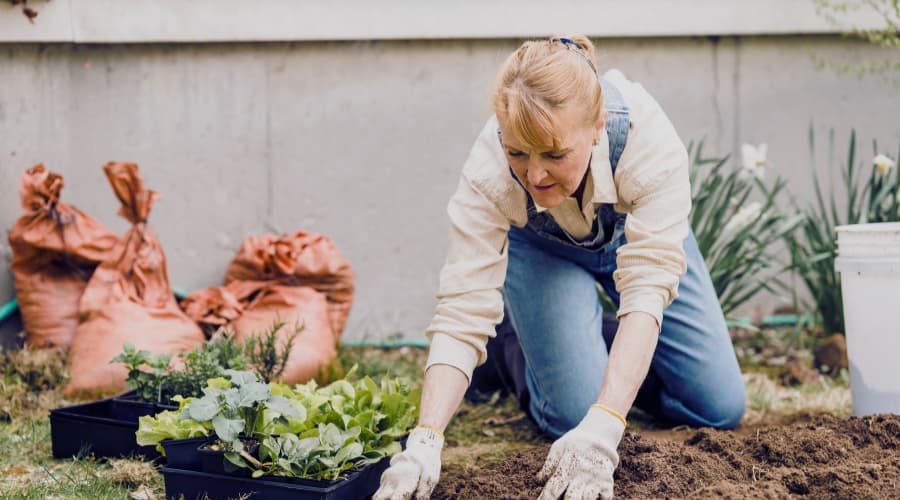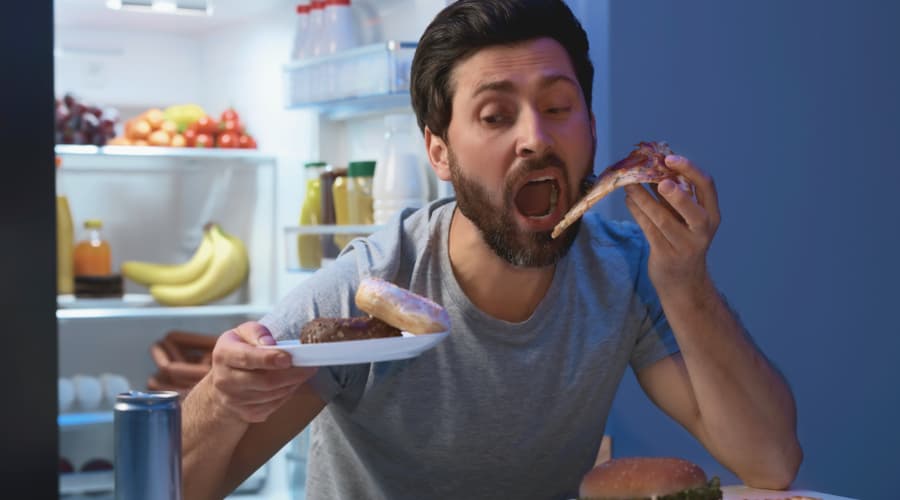Osteopathy is a health care procedure focusing on the mechanical and structural elements of the body. The musculo-skeletal system consists of muscles, bones and joints. Osteopathy involves approaches to ensure the wellness of this system. Osteopathic techniques aim to alleviate pain in the musculo-skeletal system and to ensure the whole body functions well. There are different techniques that an osteopath may employ when treating a patient. It may be a combination of two or more techniques. The techniques may be soft tissue massage, joint manipulation, or gentle joint articulation and mobilisation.
Soft Tissue Osteopathy
Restriction or dysfunction in physiological motion can be painful. Osteopathic manipulative therapy aims to restore such restricted physiological motion and alleviate the pain that accompanies it. The musculo-skeletal system is connected to many parts of the body. The system therefore affects many parts. Restoring the functionality of the musculo-skeletal system is therefore beneficial to the whole body.
Osteopaths can choose from a range of osteopathic manipulative methods. Each of these methods is effective for specific symptoms. The osteopath would therefore choose a manipulation technique or method based on the patient’s symptoms. In restoring the body to normal functioning, osteopathic manipulation may focus on supporting tissue. This includes the ligaments, fascia and muscles. It requires soft-tissues techniques.
Soft-tissue techniques consist of all techniques that focus on all body tissue other than the bones. Soft tissues in the body include muscles, tendons and ligaments. Although traditional massage may seem similar to soft tissue osteopathic techniques, they are different. Traditional massage mainly focused on muscles. It involves the use of broad movements. On the other hand, osteopathic techniques are more targeted. The techniques work other tissues other than muscles.
Unlike traditional massage, osteopathy has set objectives. Once the required reaction has been achieved, the application of the techniques stops. A technique accomplishes its purpose when the muscle or tendon relaxes. The osteopath has to stop applying the technique. Continuation of the technique may lead to harm.it may cause irritation rather than the desired healing. Therefore, as osteopaths work with their patients, they need to monitor the impact of the techniques. Monitoring allows you to determine when the technique has accomplished its goal, hence the time to sop.
Different patients need different types of treatment. Sometimes, a patient may only need soft tissue techniques in their treatment. However, there are time soft tissue techniques have to go hand in hand with other techniques. Osteopathy therefore requires on understanding of the conditions that require the different approaches. Regardless of the practitioner’s preferred techniques, the patient’s problem should always determine the technique to apply. The complaint by the patient, along with the reactions upon exposure to a given technique should also advise on the length of period to apply the technique.
The Use of Soft-Tissue Techniques
Often, osteopaths us soft-tissue techniques upon diagnosis. That means that they have to determine a problem before choosing a given technique to address it. The use of the techniques can also be therapeutic. In soft-tissue techniques, one applies stretching techniques across or along muscular fibre lines. They also involve deep pressure techniques. In cases where the techniques are on muscles that originate or insert into bony structures, the osteopathic techniques involve stretching and separation of the muscles and other soft tissue fibres. Mostly, soft-tissue manipulation focuses on connective tissues.
For most cases, soft-tissue osteopathic techniques come before the manipulation of bony structures. However, these techniques can also be applied independently to mobilise and normalise joint structures. That is possible through working to improve the rigid or tense tissues. That improves the range of free motion in the joints that had some movement restrictions previously.
Soft Tissue Massage Techniques in Osteopathy
Soft tissue massage is a type of osteopathic manipulation that uses different techniques to mobilise the body’s soft tissues. The techniques are applied to tendons, ligaments, muscles, fascia, and connective tissue around joints. Osteopaths can choose from a variety of soft tissue massage techniques depending on the tissue they are working on as well as the outcome they expect. Some of these techniques include effleurage, petrissage, percussion, cupping, frictions, acupressure and lymphatic drainage.
Effleurage
In this technique, the practitioner makes broad horizontal sweeping motions with their flat palms on the soft tissues. The motions aim to increase capillary dilatation and blood flow. As a result, there is increased tissue extensibility due to warming of the tissues. The resistance of the tissues influences the amount of pressure the osteopath applies on the tissues. The pressure that the practitioner applies on the tissues acts as a mechanical pump.it pushes exudate back to the lymphatic system. The outcomes of the effleurage technique vary depending on the client. Each client has different needs and the technique helps meet those needs. Slow movements in a relaxing session would lower muscle tone. However, in a pre-match warm-up, effleurage would raise the muscle tone.
Petrissage
Petrissage uses more pressure than effleurage. It involves kneading or rolling the skin. To apply this technique, the practitioner draws tissue towards himself or herself using their fingers. The movements of the thumbs and fingers lift, stretch and squeeze the tissue. The technique is good for deep muscle tissues as its effects are able to get to the deep muscle tissues. It is ideal for areas that have tissue that is tight to the bony structures such as on the shoulders or the lateral aspect of the thighs. The technique increases blood flow and tissue extensibility as well as lowering tissue tone.
Percussion
There are several percussion techniques. Their variation is based on the differences in hand position. Hacking, one of the percussion techniques, involves a chopping action. The practitioner uses the outer edge of the hand, with the thumb pointing upwards, to chop on the patient’s body. Another percussion technique is the cupping method. It involves tapping rapidly over the soft tissues with the hands. The hands form shallow cup shapes as one pats the client’s body. For the percussion techniques, the palm hardly touches the skin. The techniques help in stimulating activity in the nervous system. They also reduce the build-up of lymphatic fluid. Percussion techniques lower tissue tone.
Cupping
Cupping is a different technique from the percussion cupping technique. While the percussion cupping technique uses cup-shaped palms, the cupping technique uses cups of varying sizes. The cups are placed upside down on the skin and form a seal. Air is then drawn out of the cups, resulting in a partial vacuum. One can leave the cups intact or move them about on the skin surface. Moving them about does not lose suction. The outcomes of this technique vary. It increases blood flow to a given area. It also draws out deep pockets of inflammation. The technique also softens tight muscle and connective tissue.
Frictions
Frictions is a targeted deep massage going below superficial tissues. For effective results, the application of this technique is diagonal or across the direction of the structures needing the treatment. This technique aims to move tissues beneath the skin without moving the skin. The method aims to break the collagen fibres that form in unwanted directions. These collagen fibres could be in the muscle, tendon or ligament tissue. The technique corrects the formation of the fibres. As a result, the fibres are able to form in the direction of greatest flexibility while maintaining tissue mobility. The technique may be uncomfortable at first. However, it produces a numbing effect that eliminates the need for pain relieving medication.
Acupressure
Acupressure works in a similar way to Frictions. It targets specific pressure points across the body structure. As a massage technique, it involves applying targeted pressure on target areas to produce desired responses in soft tissue. The constant pressure of this technique helps in releasing muscle tension. The resulting relaxation of the muscles helps them elongate. Acupressure is an effective technique for relieving tension and pain as well as dispersing toxin build-up in the body. It also results in improved circulation. The amount of pressure and the duration for this method will vary depending on the area of application.
Elbow Technique
The thumb and fingers will not always be sufficient to apply pressure on muscle tissue. Some tissues such as the gluteals and the sacrospinal group require something more effective. The elbow technique allows the practitioner to massage such muscles effectively. The practitioner uses the elbows to apply controlled pressure on the muscles. However, one should take caution as this technique may cause discomfort or pain to the patient. The technique is effective in relaxing muscle tissue.
Lymphatic Drainage
The lymphatic system plays a very important role in the body. It helps drain excess fluids from the soft tissues into the circulatory system. Whereas the circulatory system has the heart for pumping blood across the body, the lymphatic system does not have a pump to help in movement of the fluids. Muscle pump action during body movements help the lymphatic system in draining waste fluids. A patient with reduced mobility due to illness or injury can have issues with lymphatic drainage. As an osteopathic technique, lymphatic drainage aims to direct lymphatic flow towards lymph nodes. The technique involves light directional strokes on the soft tissue. It is an intervention that helps reduce swelling due to fluid build-up. It helps relax the body.
Benefits of Soft-Tissue Osteopathic Techniques
Generally, the soft-tissue techniques help restore the body’s functions as well as ease pain for patients. Each of the different techniques has its specific benefits. Some of the general benefits that one can enjoy from soft-tissue techniques include:
- Increasing relaxation and reducing stress
- Releasing body tension
- Relieving pain in different parts of the body such as the back, joints, the neck and the head
- Healing wounds and injuries
- Improving flexibility and motion range
- Treating painful conditions
- Treating indigestion
One can derive different benefits from soft tissue osteopathic manipulation. The benefits go beyond relaxation and de-stressing. Some of the techniques can come in handy in medical treatment procedures. However, one needs to have a detailed anatomical understanding to be able to combine the osteopathic approaches with medical interventions. The techniques can help relieve oedema. They can help push fluids back to the lymph nodes for re-absorption and dissipation, thus easing the swelling. Similarly, the techniques can help improve flexibility, blood flow and healing in soft tissue such as tendons, ligaments and muscles. The Osteopathic manipulation techniques are therefore beneficial in restoring musculo-skeletal conditions.
As people go about their normal activities, they are bound to experience some pain or injury that limits their movement. Some are work related. For example, sports people constantly suffer injuries that require attention. Although other medical approaches can help them recover, applying osteopathic techniques may be more effective in restoring body motion and alleviating the pain. Soft-tissue osteopathy is especially important in managing injuries as it helps rehabilitate the patient. The techniques facilitate faster healing. They also help minimise and prevent future injuries. The therapies can also help old people enjoy greater mobility and flexibility. The techniques would therefore make life easier and less painful for the aged.
Related Articles
- Frequently Asked Questions About Osteopathy
- Chiropractor or Osteopath: What Do I Need?
- Osteopathy For Babies And Children
- Benefits of Sports Massage
- Joint Support for Summer Sport




























